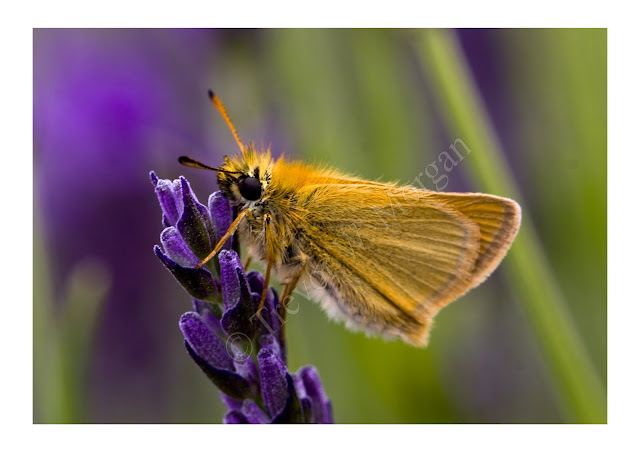THE "GOLDEN" SKIPPERS
The Small, Essex and Large Skippers are the three most common of our outwardly similar five, so called, Golden Skippers (the other two being the much rarer and localised Lulworth and Silver-spotted Skippers) each however has its own distinguishing characteristics.
The Small Skipper - thymelicus sylvestris - (despite its name, is not the smallest of our Golden Skippers , this accolade goes to the Lulworth Skipper) is a widespread and common butterfly to most of England and Wales favouring rough grassland and woodland glades. It is best distinguished from the other Skippers by its unmarked golden wings and the colour of the tips of the antennae which are orange or dull brown on the ends. In flight between late May to early August it shows great speed and manoeuvrability.
The Essex Skipper - thymelicus lineola is widespread in the South Eastern part of England and is almost identical to the Small Skipper apart from the distinctive shiny black tips to the antennae and the slightly more pointed wings. Like the Small Skipper the male is much more active than the female. Its flight is also similar to the Small Skipper in speed and manoeuvrability but tends to be more ground hugging. It prefers tall, dry grassland, woodland rides and roadside verges, especially in sunny situations. Flight period is from late May to late August.
The Large Skipper - ochlodes sylvanus is common throughout England and Wales and just over the border into Southern Scotland. It prefers rough, tall uncut grassland where on sunny mornings it can be seen patrolling in search of females and later in the day perched with its wings in the characteristic skipper 'V' shaped pose. It can be distinguished from the slightly smaller Essex and Small Skippers by the faint chequered pattern on both sides of its wings and the 'hooked' tips to its antennae. It can be seen in flight from June to August.

















